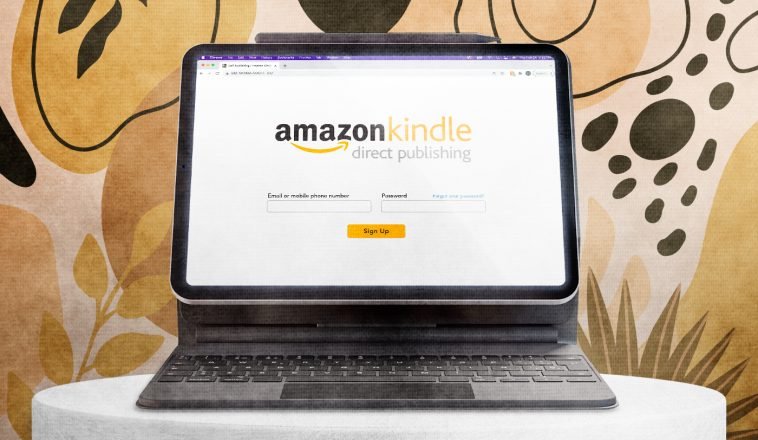Introduction.
Publishing a book on Amazon’s Kindle Direct Publishing (KDP) platform is a dream come true for many writers, but let’s be real—getting people to actually buy and read it often comes down to one crucial factor: the cover.
That’s right! Your book cover isn’t just a decoration; it’s your first shot at capturing a reader’s attention.
Imagine browsing through Amazon and coming across countless titles; a stunning, professionally designed cover can be the difference between a quick scroll and a click.
In this guide, I’ll walk you through everything you need to know to design a standout KDP book cover, even if graphic design isn’t your strong suit.
By the end, you’ll understand what makes a cover effective, the tools you can use (both free and paid), and some key design principles that can give your book the professional touch it needs.
Why a Great Book Cover Matters on Amazon KDP
Your book cover is more than just an image; it’s your book’s first impression. Studies show that people make judgments about products, including books, in seconds.
A well-designed cover suggests professionalism and quality, giving your book instant credibility.
And this isn’t just opinion—around 60% of book buyers report that the cover influences their decision to click on a book or even buy it. This makes your book cover the most powerful marketing tool you’ve got on Amazon.
How Do I Design an Amazon KDP Book Cover?
1. Understand Your Genre and Audience.
Every genre has its own cover “language.” Romance novels, for instance, tend to use warm colors and often include images of people, while sci-fi covers lean toward futuristic fonts and darker tones.
Take a few minutes to study the bestsellers in your genre. Notice any trends? They’re worth considering because they signal what readers expect.
Matching your cover to these expectations makes it more likely that your target audience will notice your book.
2. Choose the Right Tools.
You don’t have to be a Photoshop wizard to create a compelling cover. There are plenty of beginner-friendly tools that make designing easy:
- Canva: Offers free templates and is super intuitive, especially if you’re just starting out.
- BookBrush: Aimed specifically at book cover design, making it easy to create professional-quality covers.
- Adobe Spark: Also beginner-friendly, with more design freedom than Canva but without the learning curve of Photoshop.
Each of these tools has pros and cons, but Canva and BookBrush tend to be the most popular for KDP authors.
3. Pay Attention to Typography.
Fonts communicate mood just as much as images do. A thriller might use bold, stark fonts, while a cozy mystery may opt for something more whimsical.
Keep readability in mind—KDP’s display size for thumbnails means your title and author name need to be easily visible even in a smaller format. Stick to two fonts at most to avoid a cluttered look.
4. Think About Colors.
Colors play a big role in evoking emotion. Bright, contrasting colors might grab attention, but sometimes a muted, sophisticated palette can be even more compelling.
When in doubt, look back at what’s trending in your genre. Also, ensure that your colors match well and don’t clash, as poor color choices can make your cover look unprofessional.
5. Use High-Quality Images and Elements.
If your cover includes images, make sure they’re high resolution. Low-quality images can make your book look cheap and drive potential readers away.
Websites like Unsplash and Pexels offer free, high-quality images. If you’re looking for a unique design, consider investing in a paid stock photo site like Shutterstock or iStock.
6. Get Feedback.
Once you have a design you’re happy with, get feedback. Join writing or publishing groups on Facebook or Reddit, and ask for constructive critiques.
Sometimes, what looks great to you might not have the same effect on others, and feedback can help you refine your cover before publishing.
7. Format for KDP Specifications.
Amazon has specific size and quality requirements for book covers, so make sure to follow them closely. As of now, the ideal size for a KDP cover is 2560 x 1600 pixels for eBooks and 300 DPI for print books. Always double-check Amazon’s latest guidelines to ensure your cover meets all the standards.
Pros and Cons of Designing Your Own KDP Book Cover
Designing your own book cover has its advantages, but it’s not without challenges. Here’s a quick rundown:
Pros
- Cost-Effective: Hiring a professional designer can get expensive, so DIY design can save a lot of money.
- Creative Control: You have full control over every aspect of the cover.
- Learning Experience: Creating your cover teaches you basic design principles, which is helpful if you plan to self-publish more books.
Cons
- Time-Consuming: Good design takes time, and the learning curve can be steep.
- Limited Resources: If you’re using free tools, you might feel restricted in terms of fonts, images, and other elements.
- Risk of Unprofessional Look: Without design experience, there’s a chance the cover could look amateurish, which could hurt your book’s sales.
Frequently Asked Questions
Q1: Do I need a professional designer?
A: Not necessarily. Many successful self-published authors create their own covers. However, if you have the budget, hiring a designer can give you a polished, professional look that might be harder to achieve on your own.
Q2: What’s the difference between an eBook cover and a print cover?
A: An eBook cover is just the front cover image, while a print cover includes the spine and back cover as well. If you plan to publish in both formats, make sure your design can work as a full wrap for the print version.
Q3: Can I change my cover after publishing?
A: Yes, Amazon allows you to update your cover even after the book is live. Many authors do this as a strategy to refresh their book’s look and attract new readers.
Q4: Are there any free tools that offer templates specifically for Amazon KDP?
A: Yes, both Canva and BookBrush offer templates specifically sized for Amazon KDP covers, making it easy to create a design that meets Amazon’s requirements.
Q5: What’s the biggest mistake to avoid when designing a cover?
A: One common mistake is overcrowding the design with too many elements or text. Simplicity is often more effective, especially for thumbnails on Amazon.
Conclusion
Creating your Amazon KDP book cover can feel daunting at first, but it’s also one of the most exciting parts of self-publishing.
Your cover has the power to draw readers in and make your book stand out on a crowded platform. Remember, the goal is to make it visually appealing, genre-appropriate, and professional-looking without overwhelming the viewer.
Now that you’ve got the essentials of cover design, here’s a question to think about: What message do you want your book cover to send to potential readers?





GIPHY App Key not set. Please check settings